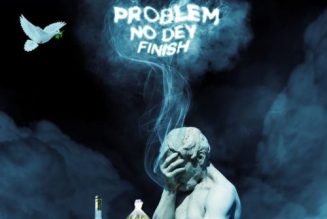This is an edition of The Atlantic Daily, a newsletter that guides you through the biggest stories of the day, helps you discover new ideas, and recommends the best in culture. Sign up for it here.
The season of Christmas music––of Mariah Carey blasting in malls, carolers gracing street corners, and children singing about Rudolph—has once again arrived. Fans of festive cheer are rejoicing, and haters are rolling their eyes. I spoke with my colleague Spencer Kornhaber, who covers music for The Atlantic, about what makes holiday music sound distinct, how the genre relies on nostalgia, and why sleigh-bell-sprinkled tunes can be so polarizing.
First, here are three new stories from The Atlantic:
“It’s Nice Wallpaper”
Lora Kelley: What makes a holiday song a holiday song?
Spencer Kornhaber: A lot of holiday music is harmonically rather dark. But instrumentally and in the performances, it’s bright and cheerful. Minor chords paired with sleigh bells and a happy choir is a classic combination that unites many holiday songs across eras. Certain piano tones and lyrical topics—of festivity and Jesus, mostly—are clichés of the genre.
That combination of bright and dark musical elements fits what the holidays do for us. It can be a glum, possibly nostalgic season, but it’s also one of celebration.
Lora: Why is so much of the canon made up of older holiday songs?
Spencer: If you look at the Christmas canon, it’s all wrapped up in nostalgia. The canon hasn’t changed much over the decades. Once in a while, a new song will sneak in there and remain in rotation. But it’s very rare that that’s happened, especially given how many people are trying every year to make a new Christmas classic.
What many people like about holiday music is that it reminds us of previous holidays, especially childhood’s. A lot of what we consider classic holiday music was written or recorded a long time ago, in the middle of the 20th century or earlier. In our culture and politics, that’s often portrayed as an era that was more pure, more prosperous, simpler than our own.
But a lot of these songs from the mid-century that we love to hear—from artists like Bing Crosby, Nat King Cole—were written at a time of crisis and responding to a mood of crisis. “Do You Hear What I Hear?” was written during the Cuban Missile crisis, and it’s shaped by the fear of nuclear war. “I’ll Be Home for Christmas” resonated during World War II, when soldiers were dreaming of being home again.
Lora: Why do so many of today’s artists release holiday albums?
Spencer: It’s an easy way to make money. Mariah Carey probably could buy anything she wants for a few lifetimes just because of “All I Want for Christmas Is You.” It doesn’t take much inspiration to create a song that sounds and feels Christmas-y. Covers are completely valid and low-risk to attempt. So why wouldn’t you do it if you’re someone with an audience?
Very few of the songs become classics, but if you do hit the jackpot, that’s great. There is a lot of appetite for holiday music on various streaming platforms and radio stations. Music channels on cable play various Ariana Grande, Justin Bieber, and Taylor Swift holiday tracks. They’re not canonical, but they are good filler.
Lora: Some people love Christmas music; others couldn’t hate it more. Why does this genre elicit such strong reactions in people?
Spencer: The stuff that goes into this music is pretty objectively boring. It’s bright and cheery subject matter, cliché sounds, sleigh bells. It’s grating. Also, people have all sorts of associations with the holidays. We’re not a monoculture anymore, but everyone feels the holidays one way or another. For a lot of people, it’s not a happy time; for other people, it’s the happiest time of the year. A lot of these songs have their roots in hymnals. If you’re a churchgoing person, you probably have a different relationship with holiday music than someone who’s not.
Lora: Do you hold holiday songs to the same standards as other music?
Spencer: When I think about pop music, I consider: What is this saying about society? How is it tracking with trends? Holiday music is not something that provides a whole lot of meaning in my life. It’s like wallpaper to me. But it’s nice wallpaper.
Holiday music is a sector that doesn’t change much. It’s a canon that grows very slowly. That’s the beauty of it, and why people like it. So much changes in the world, but what we listen to every December doesn’t.
Related:
Today’s News
- The Justice Department filed charges against Hunter Biden on Thursday, accusing him of evading at least $1.4 million in taxes on income he earned working with foreign companies.
- President Vladimir Putin confirmed that he will run in Russia’s 2024 election for another six-year term.
- A Republican-led House committee launched an investigation yesterday related to anti-Semitism at Harvard, MIT, and the University of Pennsylvania, following controversial congressional testimony from the universities’ presidents.
Dispatches
- Atlantic Intelligence: Damon Beres speaks with the AI expert Gary Marcus about how institutions can protect Americans against a technology no one fully understands.
- The Books Briefing: It’s December—which means you might be feeling stressed about reading. Emma Sarappo outlines a strategy that can help you resist the pressure to be productive.
Evening Read

Nobody Told Me About ‘Mom Feet’
By Yasmin Tayag
One night in July, a few weeks after my son was born, I lay awake, desperately scrolling through photos of injured feet. The mounting pain from an ingrown toenail in my right foot had become excruciating, and the internet promised to help. I could no longer deny the fact that the exorbitantly expensive Hoka sneakers I’d bought just months before—to prevent pregnancy-related foot pain—had become too small. To my horror, my feet had grown half a size. Permanently.
Pregnancy books had informed me about the less rosy aspects of new motherhood, such as shedding hair (the baby’s and mine) and uncontrollable crying (the baby’s and mine). I was even prepared for my feet to temporarily swell through the trimesters. But no one told me they might stay that way.
More From The Atlantic
Culture Break

Read. Gabriel Bump’s second novel, The New Naturals, shows the dark side of utopia.
Watch. Atlantic staff writer David Sims has chosen his favorite film of 2023—as well as nine others that were notable this year.
P.S.
In wholesome holiday-music news: Brenda Lee’s “Rockin’ Around the Christmas Tree” just hit No. 1 on the Billboard Hot 100 for the first time (the charts started tracking streaming numbers in the 2010s). The song, which Lee recorded as a 13-year-old more than 60 years ago, had trailed “All I Want for Christmas Is You” for the past four years. Apparently, Mariah Carey sent Lee flowers to congratulate her. I enjoyed this recent profile of Lee in The New York Times and especially love the detail that she has a pillow embroidered with the song’s title.
— Lora
Did someone forward you this email? Sign up here.
Katherine Hu contributed to this newsletter.
When you buy a book using a link in this newsletter, we receive a commission. Thank you for supporting The Atlantic.




![Moses Bliss – More Than Music (Transcendent Worship) [MP3 Download]](https://www.wazupnaija.com/wp-content/uploads/2023/02/moses-bliss-more-than-music-transcendent-worship-mp3-download-5-327x219.jpg)




